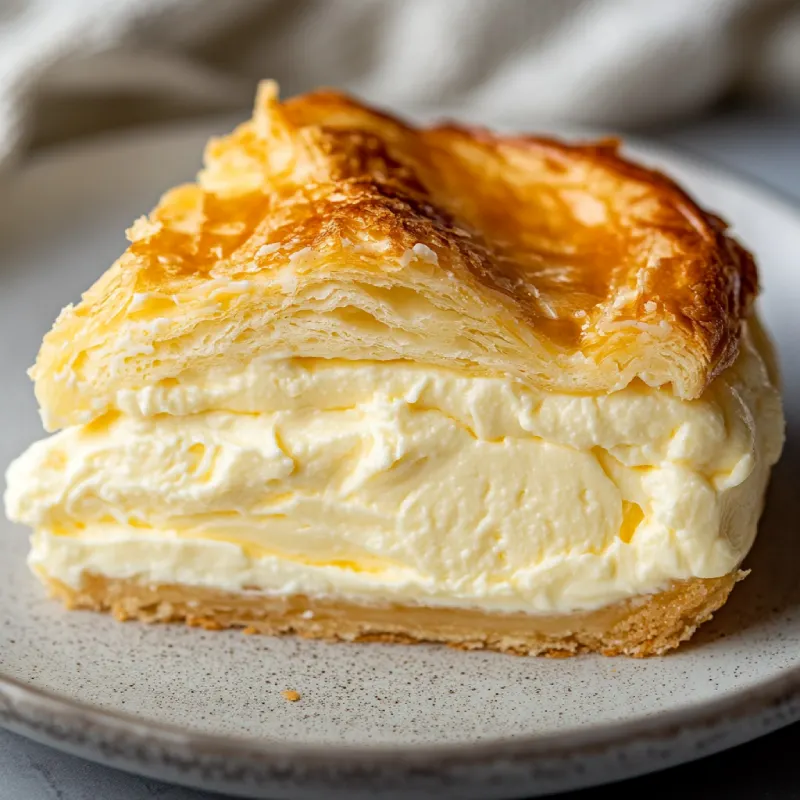Introduction to Cream Cheese Filling
Cream cheese is celebrated for its exceptional versatility in the culinary world, often finding its way into both sweet and savory dishes. From rich, decadent cheesecakes to smooth, savory spreads, cream cheese lends a creamy texture and slightly tangy flavor that enhances a variety of recipes.
Historical Background
The use of cream cheese can be traced back to the United States in the late 19th century. Originally developed in New York as an attempt to replicate the soft, French cheese Neufchâtel, American dairies added cream to the process, giving birth to what we now recognize as cream cheese. This ingredient quickly became a staple in American kitchens for its ability to improve the texture and flavor profile of dishes.
Cream cheese’s adaptability makes it a favored choice for creating rich fillings, enhancing frostings, and even adding creaminess to mashed potatoes or soups.
Essential Ingredients and Equipment for Cream Cheese Filling
Creating a perfect cream cheese filling involves a combination of staple ingredients and the right kitchen tools. Here’s what you’ll need to prepare this versatile filling that can be used in various desserts and dishes.
Basic Ingredients
- Cream Cheese: The star of the show, ensure it’s full-fat for the best flavor and texture.
- Sugar: Granulated sugar is most commonly used, but powdered sugar can also be used for a smoother consistency.
- Vanilla Extract: Adds a subtle, sweet flavor that complements the cream cheese beautifully.
- Heavy Cream: Optional, but it can be whipped and folded into the cream cheese for a lighter, airier texture.
Optional Enhancements
- Lemon Juice or Zest: For a tangy kick.
- Spices: Such as cinnamon or nutmeg, tailored to the recipe’s flavor profile.
Kitchen Tools and Equipment
- Electric Mixer: A stand mixer with a paddle attachment or a handheld mixer to blend the ingredients smoothly.
- Mixing Bowls: Preferably metal or glass.
- Spatula: To fold any additional ingredients evenly into the cream cheese.
- Measuring Cups and Spoons: For precise ingredient measurement.
Preparation Tips
- Soften the Cream Cheese: Ensure your cream cheese is at room temperature to avoid lumps.
- Gradual Mixing: Start at a lower speed when mixing to prevent the cream cheese from splattering and then increase the speed for a fluffy texture.
- Scrape the Bowl: Regularly scrape the sides of the bowl with a spatula during mixing to ensure all ingredients are well-incorporated.
Utilizing these ingredients and tools will help you achieve a flawless cream cheese filling every time.
Basic Cream Cheese Filling Recipe
Creating a basic cream cheese filling is straightforward, and with these simple steps, you can achieve a perfectly smooth and rich texture for various culinary uses.
Ingredients
- 8 ounces of full-fat cream cheese, softened
- 1/2 cup of granulated sugar
- 1 teaspoon of vanilla extract
Equipment
- Electric mixer
- Mixing bowl
- Measuring spoons and cups
- Spatula
Step-by-Step Instructions
- Preparation: Begin by ensuring your cream cheese is at room temperature. This will help to achieve a smoother texture in your filling.
- Mixing: In your mixing bowl, combine the softened cream cheese and granulated sugar. Using the electric mixer, beat on medium speed until the mixture is completely smooth and free of lumps.
- Add Flavor: Add the vanilla extract to the cream cheese mixture. Continue to beat on medium until the vanilla is thoroughly incorporated.
- Final Touches: Use a spatula to scrape down the sides of the bowl, ensuring all ingredients are well blended. Beat the mixture for an additional minute to introduce a bit of air into the filling, making it slightly fluffier.
Texture Tips
- Smooth Consistency: To avoid graininess, ensure the sugar is fully dissolved into the cream cheese. Beating at a consistent medium speed is key.
- Avoid Overmixing: While it’s important to mix thoroughly, overmixing can cause the filling to become too loose. Mix just until the ingredients are combined and smooth.
This basic cream cheese filling is not only easy to make but also incredibly versatile, perfect for pastries, desserts, and other sweet treats.
Savory Applications of Cream Cheese Filling
Cream cheese filling isn’t just for desserts; it can add richness and depth to a variety of savory dishes. From stuffed meats to flavorful pastries, here’s how to incorporate this versatile filling into your cooking.
Ideas for Savory Dishes
- Stuffed Chicken Breasts: Enhance chicken by stuffing it with a mixture of cream cheese, spinach, and garlic. The cream cheese melts during baking, creating a creamy, flavorful center.
- Savory Pastries: Fill puff pastry or crescent rolls with cream cheese mixed with herbs like dill or chives, and ingredients such as smoked salmon or cooked mushrooms.
Incorporating Herbs and Spices
- Selecting Herbs: Pair cream cheese with soft herbs such as basil, chives, or parsley for a fresh taste, or with heartier herbs like rosemary and thyme for a more robust flavor.
- Using Spices: For a touch of warmth, mix spices such as paprika, cumin, or curry powder into your cream cheese filling. These are especially good in fillings for baked goods or stuffed peppers.
Preparation Tips
- Mixing: Blend the cream cheese with your chosen herbs and spices until smooth. For best results, let the mixture sit for an hour before using to allow the flavors to meld.
- Application: Use a piping bag or spoon to neatly fill your meat or pastry. Ensure the edges are sealed well to prevent the filling from leaking during cooking.
Cream cheese filling can transform a simple meal into a gourmet experience with just a few additional ingredients.
Decorative Techniques and Presentation with Cream Cheese Filling
Using cream cheese filling for decorating cakes and other desserts not only adds a layer of delicious flavor but also enhances the visual appeal of your creations. Here are some techniques to help you use cream cheese filling effectively in your dessert presentations.
Techniques for Piping and Decoration
- Piping Tips: Utilize various piping tips to create different textures and patterns. A star tip can produce rosettes or stars, while a plain round tip is perfect for writing and making borders.
- Smooth Layers: For a perfectly smooth finish, use an offset spatula to spread the filling evenly over cakes or cupcakes. This technique is especially useful when using the filling as a base layer for additional decorations.
Creating Visually Appealing Designs
- Coloring: Cream cheese filling can be tinted with food coloring to match the theme of your event or the flavors of your dessert. For natural color options, consider blending in pureed fruits like strawberries for a pink hue or blueberries for a subtle blue.
- Combining Textures: Alternate layers of different textures by adding elements like crushed cookies, nuts, or chocolate chips between layers of cream cheese filling for an interesting and tasty visual effect.
These decorative techniques can elevate the appearance of your desserts, making them as delightful to look at as they are to eat.
Storage and Shelf Life of Cream Cheese Filling
Proper storage of cream cheese filling is essential to maintain its freshness and extend its shelf life. Here are some best practices and guidelines to ensure your filling stays delicious and safe to consume.
Best Practices for Storage
- Refrigeration: Always store cream cheese filling in the refrigerator. Place it in an airtight container to prevent it from absorbing odors from other foods.
- Airtight Containers: Use a container with a tight-fitting lid to protect the filling from air exposure, which can lead to spoilage and drying out.
Shelf Life Guidelines
- In the Refrigerator: Cream cheese filling can typically be kept in the refrigerator for up to one week. Ensure it’s stored at or below 40°F (4°C).
- Freezing: For longer storage, cream cheese filling can be frozen for up to two months. Use a freezer-safe container to prevent freezer burn.
- Thawing: Thaw frozen cream cheese filling in the refrigerator overnight before use. Do not refreeze once thawed, as this can affect the texture and taste.
FAQs: Making Cream Cheese Filling
Common Questions and Answers
- Can I make cream cheese filling dairy-free? Yes, use dairy-free cream cheese alternatives available in most grocery stores.
- How do I fix runny cream cheese filling? Increase the mixing time to help thicken the filling, or add a small amount of powdered sugar to achieve the desired consistency.
- What if my filling is too thick? Soften the filling by adding a teaspoon of milk or cream and mix until the desired smoothness is reached.
Conclusion
Mastering the perfect cream cheese filling involves understanding how to adjust the texture and accommodate dietary needs. With these tips, you can tailor your filling to suit any recipe or preference.

